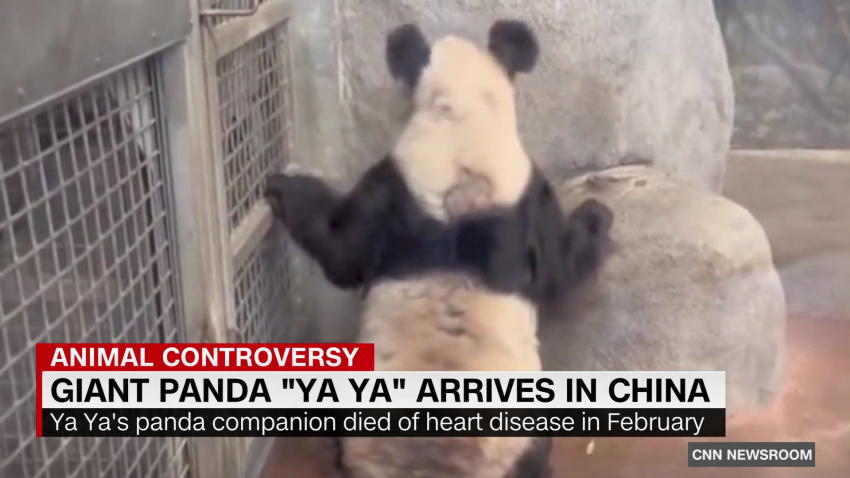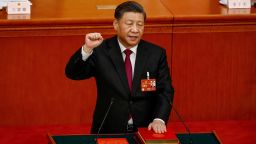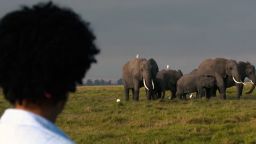Editor’s Note: Henry Nicholls is a journalist, author and science teacher based in London. He is the author of “The Way of the Panda.” The views expressed here are his own. Read more opinion on CNN.
For much of world history, the giant panda was just a giant panda, a cute and much-coveted zoological curiosity. But over the last quarter of a century, China has been deploying pandas around the world in a way that has transformed the black-and-white bear from biological to political animal. It’s a makeover that isn’t helping our furry friends.

The Memphis Zoo pandas are a case in point. When Le Le and Ya Ya arrived in Tennessee in 2003, they seemed to be just a pair of crowd-pleasing ursids. But China’s use of pandas as quasi agents of the state has meant that anything that happens to a captive panda is now viewed through a political lens. We have long known that the Memphis agreement would come to an end this year when the pandas were returned to China. But the unexpected death of Le Le in February before his repatriation to China and Ya Ya’s loss of hair owing to a genetic skin disorder led to wild allegations on Chinese social media that the Memphis Zoo had mistreated its pandas as a deliberate snub to China.
The politicization of pandas has been growing steadily since the 1950s, when the Chinese Communist Party began to fashion the giant panda as China’s national treasure, as Elena Songster documents in “Panda Nation.” In the ensuing decades, China sent pandas abroad as goodwill gifts, notably giving Hsing Hsing and Ling Ling to the National Zoo in Washington, DC, following President Richard Nixon’s visit to China in 1972.
After a short, unsavory period of renting out pandas for just months at a time for nothing but profit in conditions not always healthy for the animals, the San Diego Zoo worked with China to establish a more respectable program of breeding loans in the 1990s: sending a male and female panda on long-term leases to interested zoos around the world in exchange for around $1 million a year.
The idea behind these loans was ostensibly to increase the number of pandas and to raise significant funds for research that would benefit the conservation of wild pandas in China. But because the animals were on loan rather than permanent relocation, it also gave Beijing leverage over the fate of the pandas.
Unfortunately, the use of pandas as a diplomatic tool has gradually undermined the emphasis on conservation that defined the breeding loan model. When senior global politicians sign off on the next panda loan, it will not be a couple of cute bears taking up residence in a foreign land but two diplomatic envoys for the Peoples’ Republic of China.
The first country to be the recipient of panda breeding loans was the US, with pandas embedded in the cities of San Diego, Atlanta, Washington and Memphis. China also sent pandas to its neighbors, including Taiwan in 2008 (marking a positive development in China-Taiwan relations) and several Southeast Asian countries in the years that followed. Alongside this continental expansion, China has also dropped pandas into countries across Europe, including the UK, Germany, Finland and the Netherlands.
Unlike the movement of most other zoo animals, the placement of pandas seems to have strategic calculations for China, which has often opened up diplomatic channels and trade negotiations in places the pandas are sent. Panda loans to Australia, France and Canada, for instance, have all been linked to China’s efforts to source uranium to fuel a massive transition towards nuclear energy.
This motive would help explain why Beijing would approve of sending pandas to a minor city like Adelaide with a population size less than one-third that of Sydney. The Olympic Dam mine contains one of the world’s largest known deposits of uranium, and where is it found? South Australia.
The arrival of pandas in Edinburgh in 2011 was tied to contracts valued at several billion dollars for the supply of renewable energy technology, salmon and Land Rovers. The agreement to send pandas to Copenhagen is said to have coincided with 40 new trade agreements between China and Denmark.
And also unlike most other zoo animals, pandas cannot experience the biological inevitabilities of illness and death without causing a political disturbance. The Memphis pandas – and allegations that the zoo had been neglectful – are just the latest example. In 2010, when a male panda died in the midst of an electroejaculation operation at Oji Zoo in Japan, there was outrage on Chinese social media based on next-to-no evidence that the Japanese had done this to humiliate its age-old rival.
This increasing politicization of pandas comes with a cost. As the political animal grows in strength, the zoological animal – the real wild panda – gets eclipsed. Wild pandas are native to central China, and while their numbers have reportedly started to increase thanks mostly to conservation efforts, with Chinese officials announcing in 2021 that they had moved from endangered to vulnerable species status, they are still far too few for comfort. The latest count puts them at 1,864, but it’s hard to know if that figure and previous calculations which were comparatively lower are completely accurate.
Get our free weekly newsletter
I would argue that captive pandas are not really pandas at all. Under the strong selective forces imposed by human minds, it is as if they have become another species entirely. Trapped in captivity, bottle-fed from birth, brought bamboo by an army of zookeepers and given no experience of navigating the complex topography of a mountainside, reintroduction into the wild remains nearly impossible.
The inability to exchange genetic material with their real, wild counterparts is the definition of reproductive isolation, precisely the conditions that lead to genetic divergence and ultimately the origin of a new species. In fact, geneticists have already documented genetic differences between captive and wild pandas.
The next time a panda dispute erupts, try to resist the temptation to talk politics. Focusing on the cartoon-like captive panda threatens to erase the identity of the real, wild panda, a remarkable creature about which we still know so little. You might never see a wild panda, but they are out there, sitting on their backsides, cracking bamboo in the fragmented forests of middle China.





